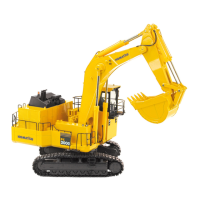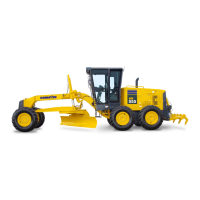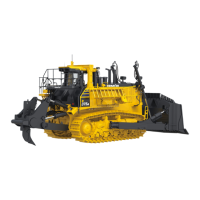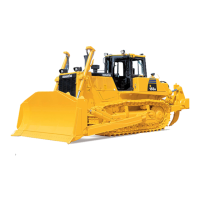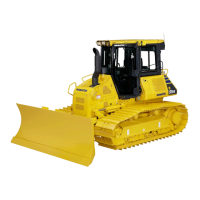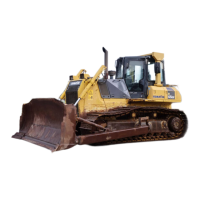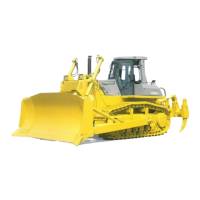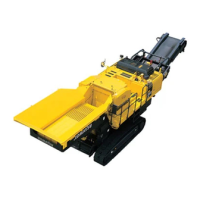.
OPERATION
OPERATION
PRECAUTIONS WHEN OPERATION
PRECAUTIONS WHEN TRAVELING UPHILL OR DOWNHILL
WARNING
Never shift gear or place the transmission in neutral when traveling on a slope. It is dangerous to do this, as the engine cannot
be used to brake the machine. Always place the transmission in the appropriate speed range before starting to travel down a
hill.
To prevent overrun, always shift down 1 gear at time.
WARNING
When going downhill, shift down the transmission to use the engine brake.
To prevent the engine from overrunning, the rotation range enabling downshifts is limited. Reduce the travel speed by
depressing the brake pedal and, after the speed becomes within the range where downshifts are possible, carry out the
downshift operation.
Gear speed
Travel speed enabling
downshifts (km/h, (MPH))
F2 -> F1 4.5 (2.8)
F3 -> F2 6.5 (4.0)
F4 -> F3 9.0 (5.6)
F5 -> F4 13.0 (8.1)
F6 -> F5 20.0 (12.4)
F7 -> F6 29.0 (18.0)
F8 -> F7 39.5 (24.5)
TRAVELING DOWNHILL
When traveling downhill, use the same speed range as when traveling uphill, and make full use of the braking force
of the engine.
If the machine travel speed is still too fast, use the foot brake.
REMARK
If there is a risk of overrunning of the engine, the centralized warning lamp lights up and the short alarm sounds
continuesly, and the gear is possibly shifted up to the next speed at the same time. These are not abnormal.
As the travel speed slows down, the gear speed automatically returns to the speed set by the gear shift lever.
IF ENGINE STOPS
CAUTION
If the engine stops, the brake booster will not work, so the operating effort of the pedal will become heavier and the effect of the
brake will become lower, even when the pedal is depressed with the same force.
If the engine stops on a slope, immediately depress the brake pedal fully to stop the machine, set the gearshift lever
to the P (Parking) position, then start the engine again.
3 - 150
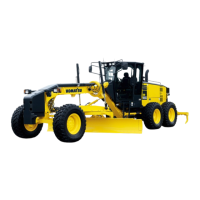
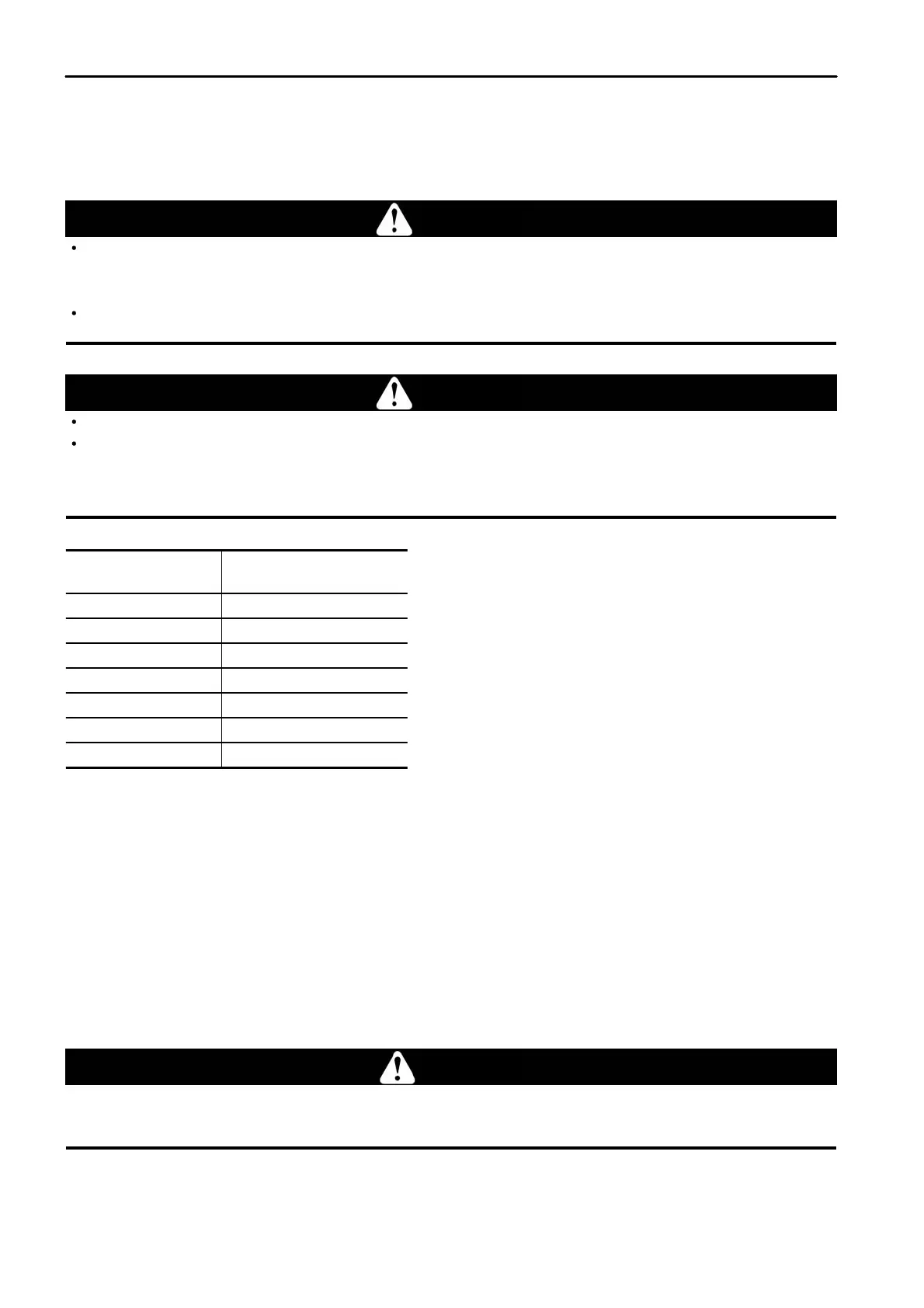